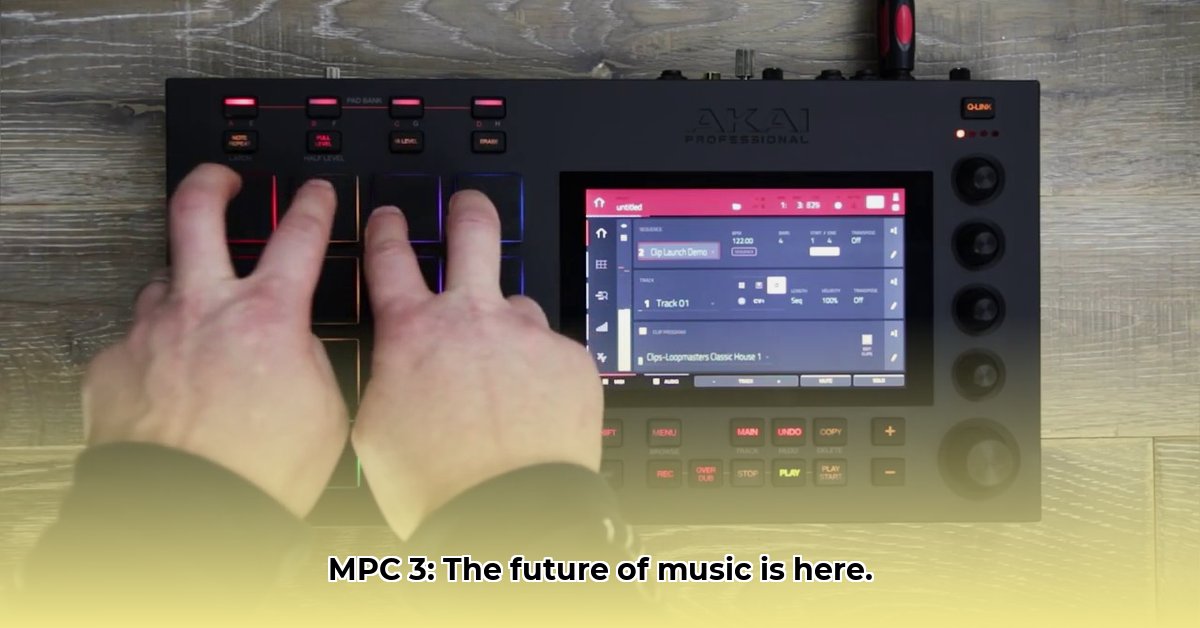
The highly anticipated Akai MPC 3 has arrived, promising a significant leap forward in music production capabilities. This isn't merely an incremental update; it's a reimagining of the iconic workflow, delivering a more intuitive and powerful creative experience for both seasoned professionals and aspiring musicians. But does it live up to the hype? Let's delve into the details.
A Streamlined Workflow: Intuitive Design for Effortless Creation
Akai has completely overhauled the MPC 3's user interface, resulting in a significantly improved workflow. The new "Main Mode" prioritizes clarity and efficiency. Menus are more intuitive, visual cues are enhanced, and the overall experience feels less cluttered and more logical. Finding and utilizing tools is now faster and more straightforward.
The Linear Arranger: A DAW-Style Approach to Sequencing
One of the most impactful changes is the introduction of the Linear Arranger. This feature, reminiscent of the arrangement timelines found in Digital Audio Workstations (DAWs), allows for a more intuitive and linear approach to track construction. Building complex arrangements is now significantly easier, streamlining the process of composing intricate musical pieces. This is a game-changer for those transitioning from DAWs or looking for a more streamlined approach to sequencing.
Sonic Exploration: Enhanced Synthesis and Sound Design Capabilities
Beyond interface improvements, the MPC 3 boasts a vastly improved sound engine. The new keygroup multi-sample synth engine enables the creation of complex and layered sounds with unprecedented ease. Detailed control is further enhanced through improved automation options, allowing for precise shaping of sonic textures.
The new XL Channel Strip provides professional-level mixing capabilities directly within the unit. This eliminates the need to export tracks to a DAW for high-end mixing, leading to a faster and more efficient workflow. Disk streaming ensures that even the most complex projects run smoothly, eliminating the frustrating delays associated with sound loading. The streamlined direct-to-pad sampling further contributes to a rapid and seamless creative process, while layering capabilities add textural depth and complexity.
Native Instruments Integration: Expanding Your Sonic Palette – With Considerations
Akai has partnered with Native Instruments, providing access to their expansive Play Series and Expansions libraries. This integration potentially unlocks a vast collection of high-quality sounds. However, this deep integration also introduces a degree of vendor lock-in. Users should carefully weigh the benefits of this extensive sound library against the potential downsides of becoming reliant on the Native Instruments ecosystem, considering long-term support and pricing policies.
Backward Compatibility: Transferring Projects from Previous MPC Versions
While the MPC 3 supports importing older MPC 2 projects, the transition isn't always seamless. The significant architectural difference between versions may lead to some compatibility issues. Akai strongly recommends backing up all projects before attempting to import them. This crucial step ensures that valuable work is not lost during the migration process. The effort of migrating some projects from older versions will depend on their complexity. Larger projects may require more manual adjustments.
MPC 3: Standalone Powerhouse or DAW Companion?
The Akai MPC 3 functions as a powerful standalone unit, a complete music production environment in a single device. This is ideal for those preferring a hardware-centric workflow. However, the standalone nature might limit users heavily invested in DAW-based workflows. Although Akai offers controller modes to integrate with DAWs, this may require exporting audio files to a DAW, which might be less straightforward for some users.
Three Pivotal Points:
- Intuitive Workflow: The redesigned interface and Linear Arranger significantly enhance ease of use and speed of production.
- Expanded Sonic Capabilities: The new synth engine, automation, and XL Channel Strip greatly expand creative possibilities.
- Native Instruments Integration (with caveats): Access to vast sound libraries is offset by potential vendor lock-in.
Conclusion: A Powerful Tool, But With Considerations
The Akai MPC 3 represents a considerable advancement in music production technology. Its success, however, hinges on individual needs and preferences. Thoroughly assess your workflow, budget, and long-term goals to determine if the MPC 3 aligns with your creative aspirations. The significant improvements in workflow and sound design capabilities are undeniable, but potential limitations, like the Native Instruments dependency and backward compatibility challenges, should be carefully considered before purchase.